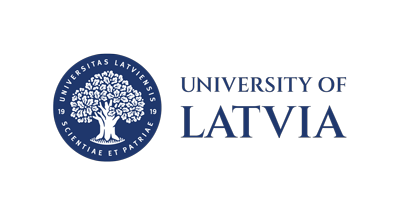Patent bibliometrics and its use for technology watch
DOI:
https://doi.org/10.37380/jisib.v7i2.236Keywords:
Competitive intelligence, nanotechnology, patent bibliometrics, patent indicators, patent information, patent statistics, patents, Spain, technology intelligence, technology monitoring, technology watchAbstract
Technology watch is a methodology for organisations to systematically analyze technical information in a continuous way in order to gain insight and competitive advantage in a specific technical domain and is based mainly on statistical analysis of patent information. Patent statistics are commonly based on bibliographic data and generated with bibliometric techniques. In this paper we describe the differences between patent bibliometrics and classic bibliometrics and propose several patent indicators for technology watch activities which we classified into four categories: performance, technology, patent value and collaboration indicators. In a case study we undertook a bibliometric patent analysis using the described groups of indicators in order to generate a technology watch of nanotechnology for the domain of a whole country (Spain) and explained the different data visualizations we used in order to represent the indicators. We conclude that statistical analysis of patent information and its visualization is a powerful methodology for any competitive intelligence activity centred on technology but there are also some limitations to bear in mind when undertaking technology watch activities using patent information discussed in terms of its timeliness, patentability criteria, sector dependence, quantity vs. quality.
References
Andaluz, D. J., & Sánchez J. (2006). Nanotecnología en España. http://www.madrimasd.org/revista/revista34/tribuna/tribuna4.asp (Accessed: 05.02.2015)
Alcacer, J., & Gittelman, M. (2006). Patent citations as a measure of knowledge flows: The influence of examiner citations. The Review of
Economics and Statistics, 88(4), 774-779.
Azagra-Caro, J. M., Fernández-de-Lucio, I., Perruchas, F., & Mattsson, P. (2009). What do patent examiner inserted citations indicate for
a region with low absorptive capacity?. Scientometrics, 80(2), 441-455.
Deshpande, N., Ahmeda, S., & Khodea, A. (2016). Business intelligence through patinformatics: A study of energy efficient data centres using patent data. Journal of Intelligence Studies in Business, 6(3).
E-IPR (2013). Fact Sheet - Automatic Patent Analysis. European IPR Helpdesk https://www.iprhelpdesk.eu/sites/default/files/newsdocuments/20131127_Patent%20Analysi
s_updated_0.pdf (Accessed: 09.02.2016)
Fleisher, C. S., & Bensoussan, B. E. (2003). Strategic and competitive analysis: methods and techniques for analyzing business competition (p. 457). Upper Saddle River, NJ: Prentice Hall.
García, C. Q., & Velasco, C. A. B. (2006). Inteligencia competitiva, prospectiva e innovación: la norma UE 166006 EX sobre el sistema de vigilancia tecnológica. Boletín económico de ICE, Información Comercial
Española, (2896), 47-64.
Glänzel, W., Meyer, M., Du Plessis, M., Thijs, B., Magerman, T., Schlemmer, B., ... & Veugelers, R. (2003). Nanotechnology: Analysis of an emerging domain of scientific and technological endeavour. Steunpunt O&O Statistieken.
Hodgson, A., Arman, H., & Gindy, N. N. (2008). An intelligent technology watch function for the high technology enterprise. International Journal of Industrial and Systems Engineering, 3(1), 38-52.
Hullmann, A., & Meyer, M. (2003). Publications and patents in nanotechnology. Scientometrics, 58(3), 507-527.
Jürgens, B., Herrero-Solana, V. (2011). Estudios sectoriales de vigilancia tecnológica para la comunidad empresarial e investigadora de Andalucía. El profesional de la información, 20(5), 533-541.
Jürgens, B., Herrero-Solana,V. (2015). Espacenet, Patentscope and Depatisnet: A comparison approach. World Patent Information. Vol. 42. doi:10.1016/j.wpi.2015.05.004
Jürgens, B., & Herrero-Solana, V. (2017). Monitoring nanotechnology using patent classifications: an overview and comparison of nanotechnology classification schemes. Journal of Nanoparticle Research, 19(4), 151.
Jürgens, B. (2016). Nanotechnology in Spain: technology watch by patents (Doctoral dissertation). University of Granada. Maghrebi, M., Abbasi, A., Amiri, S., Monsefi, R., & Harati, A. (2010). A collective and abridged lexical query for delineation of nanotechnology publications. Scientometrics, 86(1), 15-25.
Meyer, M. (2002). Tracing knowledge flows in innovation systems. Scientometrics, 54(2), 193-212.
Miller, S. H. (2001). Competitive Intelligence–an overview. Competitive Intelligence Magazine, 1(11).
Narin, F. (1994). Patent bibliometrics. Scientometrics, 30(1), 147-155.
Negash, S. (2004). Business intelligence. The communications of the Association for Information Systems, 13(1), 54.
Lloyd, M. (2015). Patent vs scientific literature - how do they compare?, Amberblog. http://www.ambercite.com/index.php/amberblog/entry/patent-vs-scientific-literature-acomparison (Accessed 10.10.2015)
Salvador, M. R., & Bañuelos, M. A. T. (2012). Applying patent analysis with Competitive technical intelligence: the case of Plastics. Journal of Intelligence Studies in Business, 2(1).
Salvador, M. R., Zamudio, P. C., Carrasco, A. S. A., Benítez, E. O., & Bautista, B. A. (2014). Strategic foresight: determining patent trends in additive manufacturing. Journal of Intelligence Studies in Business, 4(3).
Schmookler, J. (1966). Invention and economic growth. Harvard University Press, Cambridge, MA
Palop, F., & Vicente, J. M. (1999). Vigilancia tecnológica e inteligencia competitiva: su potencial para la empresa española. Madrid: Cotec.
Palmberg, C., Dernis, H., & Miguet, C. (2009). Nanotechnology: an overview based on indicators and statistics.
Pavitt, K. (1985). Patent statistics as indicators of innovative activities: Possibilities and problems, Scientometrics 7(1-2), 77–99.
Pritchard, A. (1969). Statistical bibliography or bibliometrics?. Journal of documentation, (25), 348-349.
Zuniga, P., Guellec, D., Dernis, H., Khan, M., Okazaki, T., & Webb, C. (2009). OECD patent statistics manual. Organisation for economic co-operation and development.
Downloads
Published
Issue
Section
License
Copyright (c) 2017 Journal of Intelligence Studies in Business

This work is licensed under a Creative Commons Attribution-NonCommercial-NoDerivatives 4.0 International License.
Authors who publish with this journal agree to the following terms:
- Authors retain copyright and grant the journal right of first publication with the work simultaneously licensed under a Creative Commons Attribution License that allows others to share the work with an acknowledgement of the work's authorship and initial publication in this journal.
- Authors are able to enter into separate, additional contractual arrangements for the non-exclusive distribution of the journal's published version of the work (e.g., post it to an institutional repository or publish it in a book), with an acknowledgement of its initial publication in this journal.
- Authors are permitted and encouraged to post their work online (e.g., in institutional repositories or on their website) prior to and during the submission process, as it can lead to productive exchanges, as well as earlier and greater citation of published work (See The Effect of Open Access).







